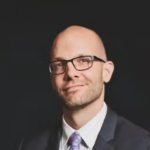
Posted on 10 Mar 2016
We came across an article about having “awake surgery”. More specifically, you aren’t awake per se, rather you are under local anesthesia. This is a decidedly negative article about unsafe practices and procedures performed by some doctors (did you notice that we didn’t say, “Surgeons?”). And while the article focuses on the way in which the anesthesia is managed, the bigger issues have to do with what is being done, by whom, and in what setting.
Now let’s start by being fair: there is nothing wrong with just having local anesthesia for the right procedures done by properly trained surgeons. For an adult, it would be ridiculous to have a mole removed with anything more than a local. But that’s not what this article talks about, and that’s not the problem. The problem is poorly or untrained physicians doing operations under unsafe conditions. The reason this is happening is greed on the part of some doctors. Let’s Discuss:
How Real Plastic Surgery Works
In order to practice at any given hospital or outpatient surgery center, you must be credentialed, which is a process that looks at your training and Board Certification to make sure that you are qualified to do the procedures you will be doing. Generally speaking, you will be only credentialed to do what you are Board Certified to do. So, as a plastic surgeon, Dr. Neaman can do all the plastic surgery procedures, but he can’t do something like knee arthroscopy, or a tubal ligation – this insures patient safety.
Some plastic surgeons have developed excellent office base operating rooms. These must be accredited by one of several organizations which will basically make sure that everything that would be available in a hospital operating room, will be available there. So, again, patient safety is assured. All Board Certified surgeons are restricted to doing surgical procedures only in accredited facilities and procedures that they are credentialed to do in hospitals. Because of these safety standards, a deeper level of anesthesia, other than local, can be delivered.
The Awake Surgery Loophole
Now, let’s just say that a doctor is a radiologist or family practitioner, and decide that liposuction and breast enlargements don’t seem too hard to do (and s/he really could use some extra income) so a doctor signs up for a weekend course, and decides that s/he will start to do them. Clearly, that doctor could not get credentialed at any licensed operating room to do this, so s/he just turns one exam rooms into an operating room so they can do liposuction and breast augmentations there. Because there is no anesthesiologist around, this procedure is performed under local anesthesia alone (which makes it “awake surgery”). It would just be the doctor, receptionist, and a bottle or two (or three, or four) of local anesthesia, and a patient.
8 Reasons Why This Is A Bad Idea
1. The doctor is totally untrained to do what he is doing. No one is looking over his shoulder to determine his education, training, or code of ethics. If this doctor does not have privileges or credentials to do this in a hospital, he shouldn’t be doing this in his office. If you have placed your life in this type of situation, you have placed your life at risk.
2. This doctor only knows how to do one of two things. If you don’t need liposuction, but really need a tummy tuck, he will not know that and only do what he supposedly knows how to do, which is the wrong thing for you.
3. You will not have adequate pain control. This will make this a terrible experience for you both during and after the operation. The operation may need to be stopped half way through because you can not stand the pain. If that happens you end up with a terrible result from a horrible experience. Furthermore, this can be dangerous.
4. Many times additional medications are given to “sedate” you so that you can tolerate the operation. But these medications have side effects which must be monitored by a nurse anesthetist or anesthesiologist. Otherwise, you might stop breathing.
5. In order to attempt to give adequate local anesthesia, a very high does of the local anesthetic drug (usually lidocaine) may be needed. If too much is given, this can lead to lidocaine toxicity which can be fatal.
6. Since this operating room is not certified (and will never be), it is an unsafe surgical environment which can at the very least lead to an increased infection rate.
7. Some patients are opting for breast enlargement under local anesthesia alone so that they can decide what size implants should be used. Basically the doctor will put in the implants, sit that patient up and ask her how big she wants to be. However, this should be planned out well in advance and in addition, if the patient has been given other medications, she is in no position to make any informed decisions. The size of the implants should not be decided upon on a whim by a sedated patient in the middle of surgery.
8. The best money you spend on your surgery may be to have an anesthesiologist present. His or her job is simply to make sure that you are safe, and have adequate pain relief. Let your surgeon perform your surgery, and your anesthesiologist manage your anesthesia.
Visit a Board Certified Plastic Surgeon
Be sure that whatever you are doing is safe. Go to a Board Certified specialist like Dr. Neaman for the procedure you are anticipating and only have this done at an accredited operating facility. If the price you are quoted, seems to be too low, and too good to be true, guess what: it is. In any city, most of the Board Certified plastic surgeons will be pretty close in price. Do your homework. Ask questions, and if you aren’t getting straight answers, find the door and walk out.
Contact Neaman Plastic Surgery today to schedule your consultation with Dr. Neaman and learn if you are a candidate for cosmetic surgery – 844-338-5445.

Dr. Keith Neaman
Dr. Neaman is a board-certified plastic surgeon that specializes in surgical body contouring. He prides himself on being on the cutting edge of plastic surgery. He takes an informative approach to each consultation, and through open dialogue and communication, he helps his patients decide on a treatment plan that meets their needs.

 English
English  Español
Español